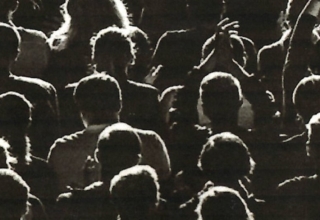
We Are All Just Human
The Dutch psychologist, Jan-Willem Van Prooijen (2018) proposes that people have a strong natural and historically entrenched tendency to affiliate with others and have a fundamental need to belong to social groups. This need becomes stronger when there is a perceived threat, such as Covid, terrorism or war. As this affiliation process occurs, so our brains form US/THEM dichotomies.
We distinguish at a very deep (biological) level between the group we are part of and other groups we are not (Robert Sapolsky, 2017). This includes group differentiation based on race, gender and societal status. Sapolsky describes how quickly and tenuously people connect with and trust others into so-called in-groups and identify with (and distrust) out-groups. In-groups are considered good, and out-groups are generally considered bad and potentially dangerous.
Neural Differentiation
We suggest that this process of differentiation might be built into the fundamental neural processes that occur in human beings. Founded in the Amygdala, there is a wired-in ongoing assessment of that which is perceived as threatening to us. This assessment, in turn, might be related to the three “semantic differential” categories identified by Osgood (1957) many years ago. Is the potentially threatening entity positively or negatively oriented toward my (our) personal welfare (good or bad)? Second, is this entity active or passive with regard to their relationship to me (us)? Third, is this entity relatively strong or weak in relationship to me (us)?
If group differentiation yields a “Them”” that is bad, active and strong, then this group is truly to be feared and can readily become the focus of a conspiracy. In terms used by the so-called “chaos theorists”, the Amygdala-embedded assessment of the menacing “other” can be a “strange attractor” that not only draws our attention, but also our energy, thoughts and emotions. This is the innate starting point in which people begin to distrust, doubt and fear others, and ultimately reject any kind of advice or information from these out-groups, their leaders or experts, whether the information or advice is scientifically sound or not – facts are irrelevant in the face of fear. They begin to sense a conspiracy against their personal and collective welfare.
Differentiation and Conspiracy
This process unfolds naturally and largely unconsciously to most people. Karen Douglas and her associates (Douglas, et. al., 2016b) conclude that “conspiracy theories result from the basic human tendency to categorize the world into ingroups and outgroups and from the corresponding desire to protect one’s ingroup from powerful outgroups that might be dangerous”. While this process is innate to humans, and has a survival component, it can also have major negative outcomes for both in-groups and outgroups, particularly when people’s susceptibility to conspiracy theories is manipulated by unscrupulous leaders for their own benefit. In particular, unscrupulous leaders can undermine, demean and demonize leaders and experts in out-groups who put forward opposing ideas.

















